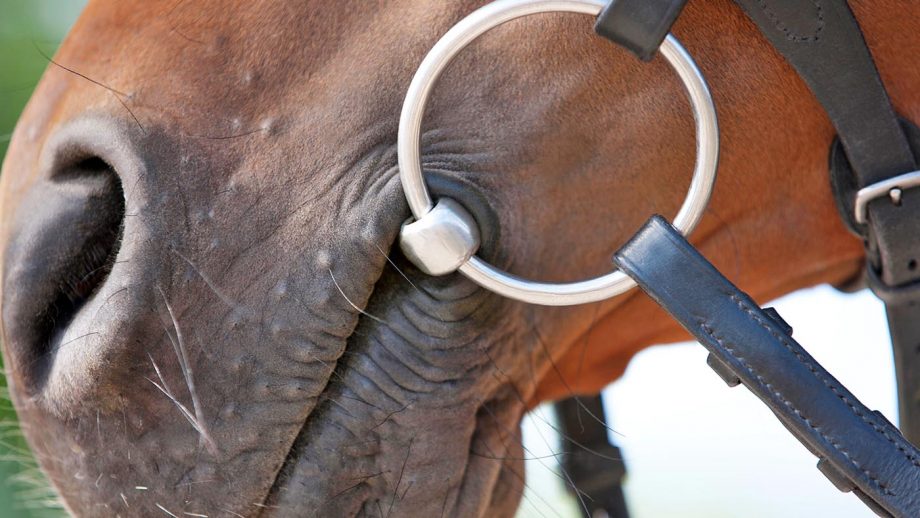
How to Stop a Horse from Running Through the Bit?
Share
As a dedicated owner of horses, you may have faced the challenge of a horse that seems to disregard your signals and runs through the bit. Understanding how to stop a horse from running through the bit is essential for both your safety and the horse's wellbeing. This article will provide practical strategies, insights, and techniques to help you manage this behavior effectively.
Horses, as magnificent creatures, have their own personalities and quirks. It is vital to comprehend their behavior to connect effectively and develop mutual trust. Lets delve into various methodologies and exercises that can ensure a stronger bond with your equine friend while reinforcing the appropriate responses you desire.

Understanding the Behavior
When discussing how to stop a horse from running through the bit, it is crucial to first understand why the horse is doing it. The reasons can be numerous, such as:
- **Inexperience:** Young or newly trained horses may not fully understand the bit's function.
- **Pain or Discomfort:** Check if your horse is experiencing any pain in its mouth or mouth area.
- **Anxiety or Fear:** Some horses may react by running away when faced with stressful situations.
- **Lack of Training:** Insufficient groundwork can lead to lack of understanding.
Recognizing these factors can help you tailor your training plan. Make sure to address the root cause rather than just the symptom of running through the bit.
Adjusting Your Tack
The first step in how to stop a horse from running through the bit could be evaluating your tack. Ensuring the bit fits appropriately is crucial for comfort and control. Some suggestions include:
- **Check Bit Size:** Ensure your bit is the right size and does not cause discomfort.
- **Different Bit Types:** Sometimes switching to a different bit can make a significant difference. Consider trying a softer bit or one with more leverage.
- **Adjust Nosebands:** Properly fitted nosebands can help by providing more control and support to the jaw.
Comfort is key! A horse that feels pain or irritation in the mouth area will be more likely to resist your commands.

Creating a Foundation with Groundwork
Before asking a horse to carry a rider, spending time on groundwork lays a solid foundation. Activities can include:
- **Yielding Exercises:** Teach your horse to yield its hindquarters and forehand through calm commanding.
- **Desensitization:** Get your horse used to having the bit in its mouth through a gradual process.
- **Lunging:** Utilize lunging techniques to instill confidence and engage the horses focus.
Enhancing the horse's understanding of commands and basics through groundwork reduces anxiety and fosters confidence.
Implementing Soft Control Techniques
While riding, soft control techniques are vital. Instead of harsh pulling, consider these methods:
- **Use of One Rein Stop:** If your horse begins to head for a gallop, gently pull one rein to bring their head around to you.
- **Half Halts:** Practice half-halts to get your horses attention back to you without cheapening the experience.
- **Consistent Support:** Be present with consistent support from your legs and seat.
Engaging the horse's attention with soft communication defines mutual respect while curbing problematic behavior.

Consistency is Key
In how to stop a horse from running through the bit, consistency is imperative. Horses thrive on routine and predictability. Ensure that every interaction, whether it is riding or groundwork, maintains clear, consistent signals. This creates a rehearsed understanding that will decrease anxiety and promote effective communication.
Along those lines, partnering your riding sessions with quality time on the ground helps reinforce learning. Both instability and predictability can make a significant difference in how your horse responds.
Positive Reinforcement Techniques
Rewarding good behavior fosters a positive learning environment. Here are some ways to employ positive reinforcement:
- **Use Treats:** Offer treats occasionally when your horse responds appropriately to your cues.
- **Vocal Encouragement:** Use encouraging words when your horse obeys commands.
- **Patience:** Always practice patience and celebrate each step forward.
Creating a positive association with training can enhance learning outcomes and foster deeper trust.

Consult With a Professional
If you find that your attempts have not yielded results, consulting with a professional trainer can provide tailored approaches for your horse's individual needs. They may have specialized insights into behavioral modifications that can ameliorate your current challenges.
For more information on different training methodologies, check out this article on horse breeds and behavior:
Regular Veterinary Checks
Seeking veterinary assistance is also wise for evaluating possible dental issues or discomfort in your horse's mouth. Regular dental checkups can eliminate pain caused by sharp edges or issues related to the bit.
Equine health directly influences their behavior, and addressing any discomfort should be a top priority.
Conclusion
Addressing the challenge of how to stop a horse from running through the bit is a fundamental part of building a reliable relationship with your horse. By understanding their behavior, adjusting your methods, and implementing consistent training, you can promote better communication.
Remember to utilize positive reinforcement and partner with professionals when necessary. Your journey with your horse can be a rewarding experience filled with growth and trust.
FAQs
1. What can cause a horse to run through the bit?
Factors such as discomfort, anxiety, and lack of training can lead to this behavior.
2. How often should I check my horse's tack?
Regular checks before every ride can help ensure your horse's comfort and safety.
3. What type of bit can help control my horse better?
A softer bit may help, but consulting with a professional is recommended to find the best option for your horse.
As an Amazon Associate, I earn from qualifying purchases.
